As a clothes steamer cleaning expert, I understand the importance of maintaining the functionality and cleanliness of your steamer. A well-maintained clothes steamer can save you time and effort while providing efficient and effective steaming for your clothing items.
Cleaning a clothes steamer may seem like a daunting task for some, but with the right tools and techniques, it can be a simple and effortless process. In this article, I will share my knowledge on how to clean a clothes steamer, including the necessary tools needed for the job, step-by-step instructions on how to clean various parts of the steamer, and tips on how to prevent future build-up. By following these guidelines, you can ensure that your clothes steamer is in top condition, allowing you to serve others by providing them with freshly steamed clothing items without any hassle or inconvenience.
Understanding The Importance Of Steamer Maintenance
Maintaining your clothes steamer is crucial to keep it functioning optimally and prolong its lifespan. Descaling, or the removal of mineral deposits that accumulate over time, is essential in ensuring that the steamer continues to produce high-quality steam. Neglecting descaling can lead to clogging and damage to the steaming unit, which may cause it to malfunction or even stop working altogether.
To avoid such issues, establish a routine maintenance schedule for your clothes steamer. This should include regular descaling and cleaning of the water tank and other parts of the unit. The frequency of these tasks varies depending on how often you use your steamer and the type of water you use. Hard water requires more frequent descaling than soft water since it contains more minerals that can build up in the system.
In summary, maintaining a clean and well-functioning clothes steamer will save you time and money in the long run by avoiding costly repairs or replacement. Understanding the importance of descaling and establishing a routine maintenance schedule are vital steps towards achieving this goal. In the next section, we will discuss the necessary tools required for cleaning your clothes steamer effectively.
Gathering The Necessary Tools For Cleaning
- Prior to cleaning a clothes steamer, it is important to prepare the work area. This includes clearing the space of any items that may get in the way of the cleaning process.
- The next step is to select the appropriate cleaning materials. It is recommended to use a non-abrasive cloth and non-toxic, pH-balanced cleaning agent.
- After gathering the necessary tools and materials, it is now time to assemble them. This includes connecting the hoses, scrub brush, and any other attachments that may be required for cleaning.
- The cleaning process should start by emptying the steamer’s water reservoir and then wiping off any visible dust or dirt.
- Next, the steamer should be filled with a cleaning solution, and the hose and scrub brush should be used to clean the inside of the steamer.
- Finally, all of the tools and materials should be removed and the steamer should be allowed to dry before use.
Preparing The Work Area
Creating a cleaning checklist is an essential step in ensuring the smooth and efficient cleaning of a clothes steamer. The checklist should include all the necessary tools required for cleaning, such as a lint roller, distilled water, white vinegar, and a clean cloth. Before starting the cleaning process, it is crucial to gather all these tools together and place them within reach.
Another important aspect to consider when preparing the work area for cleaning is proper ventilation. This means that the room in which you are going to clean the clothes steamer should be well-ventilated to allow for fresh air circulation. A lack of proper ventilation can lead to respiratory problems or even fainting due to inhaling chemicals such as white vinegar.
To ensure that everything runs smoothly during the cleaning process, it is essential to make sure that your work area is clean and free of any unnecessary items or clutter. This will allow you to move around freely without tripping over anything while also minimizing any risk of damage to your clothes steamer. By taking these preparatory steps, you can save yourself time and energy while achieving optimal results when cleaning your clothes steamer.
Selecting Cleaning Materials
As a clothes steamer cleaning expert, gathering the necessary tools is just one aspect of preparing for the cleaning process. Selecting the right cleaning solutions and materials is equally important. When it comes to choosing cleaning solutions, eco-friendly options should be considered as they are not only better for the environment but also safer for your health.
When selecting cleaning solutions, it is essential to read labels carefully and choose products that are specifically designed for clothes steamers. Avoid using harsh chemicals that can damage the machine or leave behind harmful residues. Instead, opt for eco-friendly options such as white vinegar or lemon juice mixed with distilled water.
Aside from cleaning solutions, you’ll also need to choose appropriate materials such as cloths or sponges for wiping down surfaces. Microfiber cloths are an excellent choice as they are gentle on delicate surfaces and do not leave behind lint or streaks. By selecting the right cleaning materials and solutions, you can ensure that your clothes steamer is cleaned thoroughly without any harm to yourself or the environment.
Assembling The Tools
Understanding the assembly process is an essential aspect of preparing for clothes steamer cleaning. As a clothes steamer cleaning expert, I recommend reading the owner’s manual to understand how the machine works and its components. This step will help you identify the necessary tools required for efficient cleaning. Additionally, it is crucial to assemble all the tools in one place before starting the cleaning process to avoid any delays or interruptions.
To efficiently clean your clothes steamer, there are tips you should consider when assembling your tools. Firstly, ensure that you have a water source nearby as most steamers require water to function correctly. Secondly, ensure that all removable parts such as brushes or nozzles are easily accessible and within reach during the cleaning process. Lastly, consider using a vacuum cleaner with a hose attachment to remove any dust or debris from hard-to-reach areas.
Assembling the necessary tools for clothes steamer cleaning can be time-consuming but is worth it in ensuring efficient and safe cleaning of your machine. By understanding the assembly process and following these tips, you can avoid any delays or interruptions during the cleaning process and keep your clothes steamer functioning optimally.
Preparing The Steamer For Cleaning
Before cleaning your clothes steamer, it is essential to prepare your tools. You will need a soft-bristled brush, distilled water, and white vinegar. The soft-bristled brush will help you remove any dirt or residue that may be stuck inside the steamer. Distilled water is essential because it does not contain any minerals that can clog the steamer’s heating element. Lastly, white vinegar is an excellent solution for removing any buildup of mineral deposits.
Safety precautions should be taken before cleaning your clothes steamer. First, unplug the steamer from the electrical outlet and let it cool down completely. Then, empty any remaining water from the reservoir and detach all removable parts of the steamer. It is important to read your steamer’s manual as some models have different parts that require different cleaning methods. It is also recommended to wear gloves to protect your hands from hot water or steam during the cleaning process.
Now that you have prepared your tools and taken safety precautions, you are ready to clean your clothes steamer thoroughly. The next section will guide you through each step in detail on how to clean each part of your clothes steamer, starting with the water tank. Remember always to refer to your specific model’s manual for additional information on cleaning instructions and materials used for optimal results.
Transition: Now that we have prepared our tools and taken safety precautions let us move on to how we can clean our clothes steamer’s water tank effectively without causing damage or harm.
How To Clean The Water Tank
So, you’re ready to give your clothes steamer a good scrubbing, eh? I can tell you’re committed to keeping your garments wrinkle-free and looking sharp. But before we get into the nitty-gritty of cleaning the water tank, let’s take a moment to appreciate just how important this task is. Think about it – what good is a clothes steamer if it’s clogged with buildup and rusting away? Not much, I’d say.
First things first: removing build up. Over time, mineral deposits from tap water can accumulate in your steamer’s water tank, obstructing the flow of steam and reducing its effectiveness. To prevent this from happening, it’s best to use distilled water in your steamer whenever possible. If you must use tap water, consider using a filter or decalcifying solution to reduce the buildup of minerals. To remove existing buildup, mix equal parts white vinegar and water and pour the solution into the tank. Let it sit for an hour or two (depending on how severe the buildup is), then drain and rinse the tank thoroughly.
Another common issue with clothes steamers is rusting. This can happen when moisture gets trapped inside the tank or when the steamer isn’t used for long periods of time. To prevent rusting, make sure to empty any remaining water from the tank after each use and leave the cap off so that any residual moisture can evaporate. If you plan on storing your steamer for an extended period of time (say, more than a few months), consider spraying some WD-40 or other rust-prevention spray inside the empty tank.
With these tips in mind, you should be well-equipped to tackle cleaning your clothes steamer’s water tank like a pro! But don’t stop here – next up, we’ll cover how to clean the steaming wand itself for optimal performance.
How To Clean The Steaming Wand
To ensure that your clothes steamer is working at its best, it’s important to clean not only the water tank but also the steaming wand. Begin by turning off and unplugging the steamer, then detach the wand from the unit. Be careful when handling the wand as it can be hot and may cause burns. Use a cleaning solution of white vinegar and water or a mixture of dish soap and warm water to wipe down the wand thoroughly.
Preventing rusting on your clothes steamer is essential in prolonging its lifespan. After cleaning, dry the wand completely with a soft cloth to prevent moisture from building up and causing rust over time. Make sure all parts are properly assembled before using it again.
Cleaning solutions for your clothes steamer are readily available in most stores, but you can make your own by mixing safe ingredients such as white vinegar and baking soda or lemon juice with water. Always follow manufacturer’s instructions on which cleaning solutions work best with your specific model. By regularly cleaning your steamer’s wand, you can help maintain its effectiveness while preventing buildup that could result in damage or malfunction.
As important as cleaning the water tank and steam wand is, don’t forget about cleaning out the hose too! Neglecting this part of your steamer can lead to blockages that will affect how well it works. In our next section, we’ll discuss how to properly clean out the hose to keep your clothes steamer running smoothly.
How To Clean The Hose
When it comes to keeping your clothes steamer clean, one of the most important parts to focus on is the hose. Over time, residue from fabric fibers and mineral deposits from water can build up within the hose, leading to clogs and decreased performance. However, with a few simple steps, you can keep your hose clean and prevent these issues from occurring.
To start cleaning your hose, first disconnect it from the steamer unit. Next, use a soft-bristled brush or cloth to gently scrub the inside of the hose. This will help remove any built-up residue or mineral deposits that may be present. Be sure to focus on areas where clogs are most likely to occur, such as bends or narrow sections of the hose.
Once you have finished scrubbing the inside of the hose, rinse it thoroughly with water to remove any remaining debris. You may also want to consider using a specialized cleaning solution designed for clothes steamers in order to provide a deeper clean and prevent future buildup. With regular cleaning and maintenance of your clothes steamer’s hose, you can ensure that it continues to perform at its best for years to come.
With the hose now cleaned and properly maintained, it’s time to move on to another important part of your clothes steamer: the nozzle. In order for your steamer to work effectively, it’s essential that its nozzle is kept free of debris and buildup. In the next section, we will discuss how you can properly clean this part of your steamer in just a few easy steps.
How To Clean The Nozzle
- To properly clean a clothes steamer nozzle, it is necessary to first disassemble it.
- Once the nozzle is removed, use a damp cloth to clean the interior as well as the exterior.
- Pay special attention to the nozzle’s crevices, as dirt and debris can easily accumulate there.
- When the nozzle is clean, use a dry cloth to dry it completely.
- Once the nozzle is dry, reassemble it and all of its parts.
- Finally, check the nozzle for any blockages and take the appropriate action if any are present.
Disassemble The Nozzle
As a clothes steamer cleaning expert, I understand the importance of maintaining the functionality of your steamer. One crucial step in this process is disassembling the nozzle to clean it thoroughly. By doing so, you ensure that there is no build-up of mineral deposits or other debris that can compromise the performance of your steamer.
To disassemble the nozzle, you will need a few tools. These include a screwdriver and needle-nose pliers. Begin by unplugging the steamer and waiting for it to cool down completely before starting the disassembly process. Then, remove any attachments from the nozzle and locate the screws that hold it together.
Once you have found these screws, use your screwdriver to remove them carefully. Be sure to keep track of where each screw goes as they may differ in size or shape. Next, use your needle-nose pliers to carefully pull apart any remaining parts of the nozzle until you have access to all areas that need cleaning. With these simple disassembly steps, you are well on your way to cleaning your clothes steamer effectively without damaging any components.
Clean The Nozzle
As a clothes steamer cleaning expert, I cannot overemphasize the importance of maintaining the functionality of your steamer. One crucial component that needs regular maintenance is the nozzle. The nozzle is responsible for producing steam, and any malfunction or clogging can lead to uneven distribution of steam and reduced performance. Therefore, it is essential to clean the nozzle regularly using appropriate cleaning solutions and following a maintenance schedule.
To clean the nozzle effectively, you will need specific tools such as a screwdriver and needle-nose pliers. Before disassembling the nozzle, ensure that you have unplugged the steamer and allowed it to cool down entirely. Then, remove any attachments from the nozzle and locate the screws holding it together. Using your screwdriver, carefully remove all screws while taking note of their sizes and shapes to avoid mixing them up during reassembly.
After removing all screws, use your needle-nose pliers to pull apart any remaining parts of the nozzle until you have access to all areas that need cleaning. Ensure that you use appropriate cleaning solutions to remove any mineral deposits or debris clogging the nozzle’s tiny holes or crevices thoroughly. Once done with cleaning, carefully reassemble all parts in their correct positions before testing if it functions correctly. With these simple steps, you can keep your clothes steamer running smoothly for an extended period without compromising its performance.
Reassemble The Nozzle
Now that you have cleaned the nozzle of your clothes steamer, it is time to reassemble it. Reassembling the nozzle may seem like an easy task, but there are tips and tricks you should know to avoid common mistakes. First, ensure that you place all parts in their correct positions and order. Mixing up screws or parts can lead to malfunction or even damage the steamer.
When reassembling the nozzle, pay attention to small details such as the direction of airflow and alignment of screw holes. For instance, if you do not align the screw holes correctly, you may end up damaging the nozzle or having a loose connection that affects steam pressure. Additionally, ensure that all screws are tightly secured but avoid over-tightening them as this can strip threads or break plastic components.
Once you have reassembled the nozzle correctly, test it before using it on your clothes. Testing ensures that all parts work together seamlessly and produces steam evenly. By following these tips and avoiding common mistakes such as mixing up screws or over-tightening parts, you can keep your clothes steamer running smoothly for an extended period without compromising its performance.
How To Clean The Handle
Cleaning the handle of your clothes steamer is an important part of maintaining its overall functionality. Over time, dirt and grime can accumulate on the handle grip, making it slippery and difficult to hold. Fortunately, there are several tips you can follow to keep your clothes steamer’s handle clean and in good condition.
Firstly, it’s important to know what not to do when cleaning a clothes steamer handle. Avoid using harsh chemicals or abrasive materials such as steel wool or scouring pads. These can damage the handle’s finish and cause scratches that harbor bacteria. Instead, use a soft cloth or sponge with warm soapy water to gently wipe down the handle grip.
Another tip for maintaining the handle grip is to dry it thoroughly after each use. Leaving moisture on the handle can cause rusting and corrosion over time. An easy way to ensure that your steamer’s handle is dry is to wipe it down with a dry cloth once you’re finished using it.
Cleaning Handle Tips:
- Use warm soapy water
- Avoid harsh chemicals or abrasive materials
- Dry the handle thoroughly after each use
- Wipe down with a dry cloth
- Store in a cool, dry place
In conclusion, cleaning and maintaining your clothes steamer’s handle is essential for its longevity and functionality. By following these simple tips, you can keep your steamer’s handle looking like new while also preventing any potential damage from occurring. In the next section, we will discuss how to clean the base of your clothes steamer without causing any harm to its delicate components.
How To Clean The Base
Just as the handle is essential for maneuvering a clothes steamer, the base serves as its foundation, holding the water tank and heating element. Like any appliance, the base requires regular cleaning to ensure optimal performance and longevity. Neglecting proper maintenance may result in common issues such as mineral buildup, clogging, or reduced steam output.
Troubleshooting tips for such issues include using distilled water instead of tap water to prevent mineral accumulation and avoiding overfilling the reservoir past its maximum capacity. If clogging occurs, try running a mix of vinegar and water through the steamer to dissolve any blockages. For reduced steam output, check that the heating element is clean and operating correctly.
When it comes to base cleaning and maintenance tips, avoid submerging it in water or using abrasive cleaners that can damage the surface. Instead, wipe down with a damp cloth after each use and remove any excess water from the reservoir. It’s also important to periodically descale the unit by filling it with a solution of equal parts vinegar and water and letting it sit for an hour before rinsing thoroughly.
Moving forward into how to clean the power cord, it’s crucial to always unplug the steamer before handling any electrical components. Over time, dust and dirt may accumulate on the cord, which can be wiped away with a soft cloth or brush. Avoid using harsh chemicals or excessive force when cleaning so as not to damage the insulation or wiring.
How To Clean The Power Cord
Cleaning safety is an essential aspect of owning a clothes steamer. While it may be easy to overlook the power cord, it is crucial to ensure that it is regularly maintained. A damaged or frayed power cord can cause electrical hazards, which can lead to severe accidents.
To maintain the power cord, always unplug it from the electrical socket before cleaning. Use a damp cloth to wipe the cord gently and remove any dust or dirt buildup. Ensure that the cloth is not dripping wet as excess moisture can cause electrical shocks.
Regularly inspect the power cord for any signs of damage such as cuts, exposed wires, or fraying. If you notice any damage, immediately stop using the steamer and have a qualified technician repair or replace the power cord. Proper maintenance of your clothes steamer’s power cord will not only extend its life but also ensure safety during use.
Moving on to fabric brush cleaning in our next section, it is important to note that maintaining your clothes steamer’s components is vital for optimal performance and longevity.
How To Clean The Fabric Brush
Cleaning the Fabric Brush is an essential part of maintaining your clothes steamer’s efficiency and performance. Over time, the brush can accumulate dirt, dust, and lint, which can reduce its effectiveness in removing wrinkles and creases from your clothes. To keep your fabric brush in top shape, it’s important to clean it regularly.
Cleaning frequency for the Fabric Brush depends on how often you use your clothes steamer. For frequent users, it’s recommended to clean the brush every two weeks. For those who use their steamers occasionally or infrequently, once a month should suffice. Brush maintenance involves removing any visible debris from the bristles with a soft-bristled brush or a damp cloth. Do not use harsh chemicals or solvents as they can damage the bristles.
To deep-clean your Fabric Brush, follow these steps:
- Remove the brush head from the steamer
- Soak it in warm water mixed with mild detergent for 10 minutes
- Gently scrub the bristles with a soft-bristled brush
- Rinse thoroughly under running water
- Let it air-dry completely before reattaching it to the steamer
Regular cleaning and maintenance of your Fabric Brush will ensure that your clothes steamer performs at its best for years to come.
Transition: Now that we’ve covered how to clean the Fabric Brush, let’s move on to another crucial component of your clothes steamer – the Lint Brush.
How To Clean The Lint Brush
After cleaning the fabric brush, it’s time to move on to the next component of your clothes steamer – the lint brush. The lint brush is an essential tool that helps remove any debris or lint buildup that may have accumulated in your steamer. However, just like the fabric brush, it also requires regular cleaning to maintain its effectiveness.
To clean the lint brush, you can use some of the same methods as with the fabric brush. Start by removing any loose fibers or debris from the brush. Then, use a soft-bristled brush or toothbrush to gently scrub away any remaining debris. If there are still stubborn particles left behind, you can also try using a mixture of warm water and mild detergent.
If you’re looking for alternatives to using a lint brush altogether, there are other options available. Some steamers come with a detachable lint remover tool that can be used instead. Another option is purchasing disposable lint rollers or reusable lint brushes that can easily be cleaned and disinfected after use. Whatever method you choose, make sure to properly dispose of any waste created during cleaning by throwing it in the trash bin.
Tips for preventing build-up in your steamer include emptying out the water reservoir after each use and avoiding overfilling it in the first place. Additionally, make sure to only use distilled water instead of tap water to prevent mineral deposits from accumulating inside your machine. With these simple steps and regular maintenance of all components, your clothes steamer will continue working effectively for years to come without any issues or build-up problems.
Tips For Preventing Build-Up In Your Steamer
Descaling the steamer regularly is important for preventing build-up. Removing mineral deposits and other residue will allow for better performance of the product. Cleaning the nozzle and vents of the steamer should also be done on a regular basis. This will help to prevent any clogs from occurring. It is also beneficial to flush the steamer with water periodically. This will help to remove any blockages that may have formed. Performing these regular maintenance tasks will help to ensure that the steamer functions at its best. Regular maintenance is essential for preventing build-up in the steamer.
Regularly Descale
Removing mineral deposits is a crucial aspect of maintaining the longevity and functionality of your clothes steamer. Over time, the water you use to steam your clothes can leave behind mineral deposits that clog up the machine’s internal workings. If left untreated, this can lead to reduced performance and even mechanical failure. As a professional in the cleaning industry, I highly recommend regularly descaling your clothes steamer to prevent such build-up.
To effectively remove mineral deposits from your clothes steamer, you’ll need to use a cleaning solution specifically designed for this purpose. There are plenty of commercial solutions available on the market that work wonders when it comes to descaling. Alternatively, you can create your own cleaning solution at home by mixing equal parts water and white vinegar. Whatever solution you choose, be sure to follow the instructions provided carefully.
Regularly descaling your clothes steamer is an essential step in keeping it functioning correctly and efficiently. Not only will this help prevent build-up that could lead to costly repairs down the line, but it will also ensure that your garments receive optimal steam treatment every time they require one. By incorporating this simple task into your routine maintenance schedule, you can keep your clothes steamer working as good as new for years to come.
Clean Nozzle And Vents
As a clothes steamer cleaning expert, I highly recommend incorporating regular cleaning techniques into your maintenance routine to prevent build-up and ensure optimal performance. One essential step in this process is to clean the nozzle and vents of your clothes steamer. Over time, these parts can become clogged with lint, dust, and other debris, reducing the machine’s effectiveness.
To clean the nozzle and vents of your clothes steamer, start by unplugging it and allowing it to cool down completely. Then remove any excess water from the tank and detach the nozzle attachment if possible. Use a small brush or cloth to gently clean out any visible debris from both the nozzle and vents. If necessary, you can also use a toothbrush dipped in diluted white vinegar solution to scrub away stubborn build-up.
If you find that despite regular cleaning, you are still experiencing issues with your clothes steamer’s nozzle or vents, additional troubleshooting tips may be necessary. It’s best to consult your machine’s user manual or contact a professional for guidance on how to proceed. By taking these preventative steps and addressing any issues promptly, you can keep your clothes steamer working efficiently for years to come while saving money on costly repairs.
Flush Steamer With Water
To ensure that your clothes steamer continues to provide optimal performance, it is crucial to incorporate regular maintenance techniques into your routine. One effective method for preventing build-up in your steamer is by flushing it with water. Not only does this help remove any debris or mineral deposits that may be present in the machine, but it also helps keep the steamer functioning at its best.
When choosing the right type of clothes steamer, it is essential to consider the benefits of steaming clothes. Unlike traditional ironing methods, steamers are gentle on fabrics and can help reduce the risk of damage or discoloration. Additionally, they can help remove wrinkles and odors from clothing quickly and efficiently, making them a convenient option for busy individuals.
To flush your clothes steamer with water, start by unplugging the machine and allowing it to cool down completely. Then fill the tank with clean water and turn on the steamer. Allow the machine to run until all of the water has evaporated or until you notice that the steam is no longer coming out smoothly. This technique should be used regularly to prevent build-up in your steamer and ensure that it continues to work effectively over time.
How Often Should You Clean Your Clothes Steamer?
Frequency is an important factor to consider when it comes to cleaning your clothes steamer. Neglecting regular maintenance can lead to the buildup of mineral deposits, which can clog the steam vents and affect the overall performance of your steamer. For this reason, it’s recommended that you clean your clothes steamer after every use.
There are several methods you can use to clean your clothes steamer, depending on the type of cleaner you prefer. Some people choose to use a mixture of vinegar and water, while others opt for distilled water or specialized cleaning solutions. Regardless of which method you choose, it’s important to follow the manufacturer’s instructions and take care not to damage any delicate components.
Ultimately, the frequency with which you clean your clothes steamer will depend on how often you use it and how hard your water is. If you notice any performance issues with your steamer or if you see visible signs of mineral buildup, such as white flakes or discoloration on the steam vents, it’s time to give your machine a thorough cleaning. By staying on top of maintenance tasks like this, you can ensure that your clothes steamer continues to function effectively for years to come.
Transition: Now that we’ve covered the importance of maintaining a clean clothes steamer let’s move onto troubleshooting common steamer cleaning issues.
Troubleshooting Common Steamer Cleaning Issues
One common problem with cleaning a clothes steamer is removing built-up mineral deposits. Over time, the minerals in tap water can build up and clog the steaming holes, which can lead to reduced performance or even total failure of the device. To troubleshoot this issue, try using a mixture of equal parts white vinegar and water to dissolve the mineral buildup. Simply fill the steamer with the solution and allow it to sit for several hours before rinsing thoroughly with clean water.
Another common issue when cleaning a clothes steamer is mold or mildew growth on the interior surfaces. This can occur when moisture is left inside the device for an extended period of time, particularly if it is stored in a damp environment. To prevent mold growth, always empty any remaining water from the steamer after use and allow it to dry completely before storing. If you do notice mold or mildew growth, try wiping down the interior surfaces with a diluted bleach solution and allowing it to air dry completely before use.
Finally, if your clothes steamer doesn’t seem to be producing steam at all, there are a few troubleshooting tips you can try. First, check that there is enough water in the reservoir – if it’s empty, refill it according to the manufacturer’s instructions. If there is plenty of water but still no steam, make sure that all connections are secure and that there are no leaks in hoses or fittings. If these checks don’t resolve the issue, it may be necessary to have your device serviced by a professional technician.
By keeping these common problems in mind and following these troubleshooting tips, you can keep your clothes steamer performing at its best for years to come. Remember to always refer to your manufacturer’s instructions for specific cleaning recommendations and never hesitate to seek professional help if needed. With proper care and maintenance, your clothes steamer will continue providing quick and easy wrinkle removal whenever you need it!
Conclusion
Maintaining the proper function of your clothes steamer is essential for keeping your garments wrinkle and odor-free. Neglecting to clean your steamer can lead to build-up, decreased performance, and even damage to the machine. As a clothes steamer cleaning expert, I recommend performing routine maintenance on your steamer as part of your regular cleaning routine.
To properly clean your clothes steamer, gather the necessary tools such as white vinegar, distilled water, and a lint brush. Before beginning the cleaning process, ensure that the machine is unplugged and has cooled down completely. Start by cleaning the water tank with a mixture of white vinegar and distilled water. Next, clean the steaming wand using a lint brush and wipe it down with a damp cloth. Finally, remove any lint or debris from the lint brush.
To prevent build-up in your steamer, use distilled water instead of tap water and empty the tank after each use. It is recommended that you clean your clothes steamer at least once every three months to maintain optimal performance. If you encounter any issues during the cleaning process, consult your user manual or contact customer support for assistance.
In conclusion, proper maintenance of your clothes steamer is crucial for prolonging its lifespan and ensuring optimal performance. By following these tips for cleaning and preventative measures, you can keep your steamer working like new for years to come.
Image Credits
- “Electrolux Design Lab – ‘Renew’ – Steam cleaning coming to a wall near you” by Electrolux Design Lab (featured)



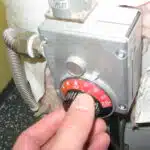
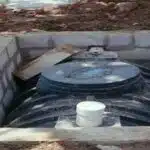


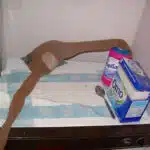
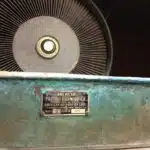





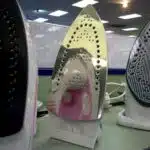







![How To Wash And Care For White Clothes 22 The only genuine borax soap cleanses hygienically saves the clothes and hands. 20 Mule-Team brand Boraxo white laundry soap [front]](https://green-life.blog/wp-content/uploads/2023/05/YDXLLCovnOjq-150x150.jpg.webp)
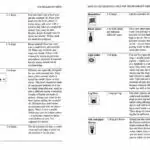


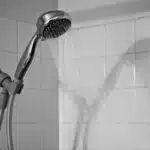
![How To Remove Perfume Odors From Clothes 27 For pungency, strength, durability and delicacy of odor. Read's Grand Duchess Cologne. [back]](https://green-life.blog/wp-content/uploads/2023/05/b-myfoHrx-jq-150x150.jpg.webp)

